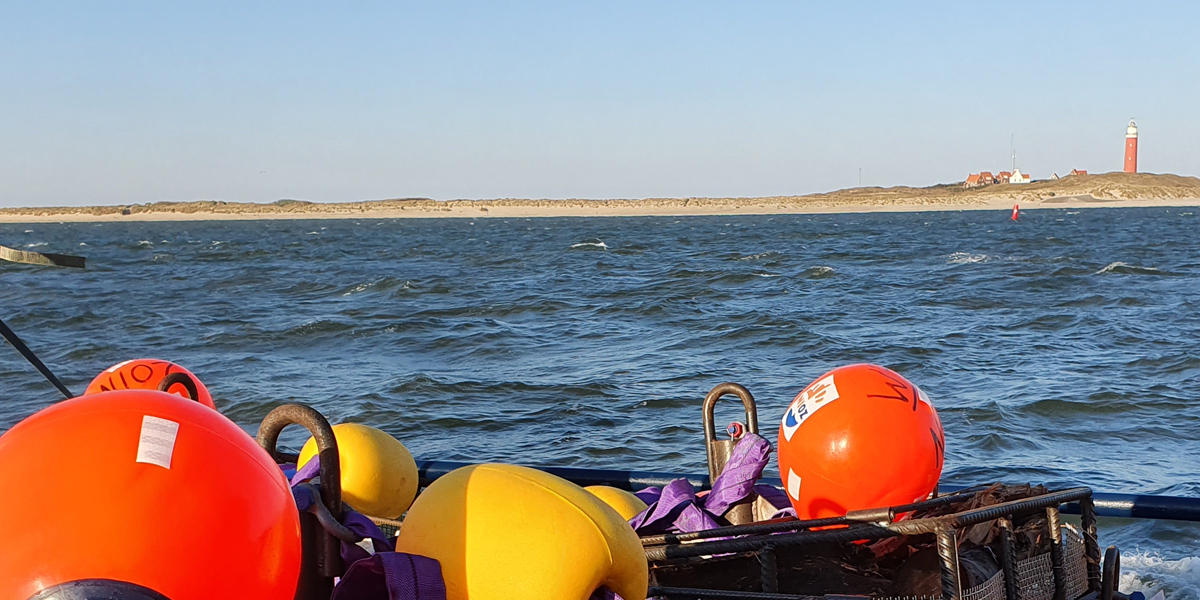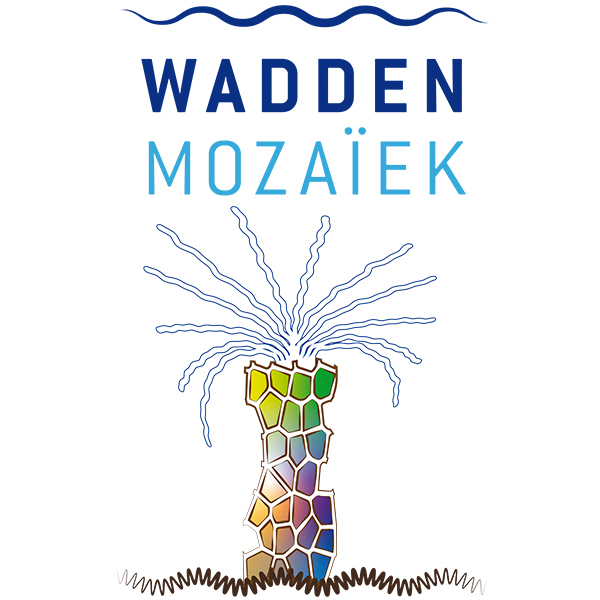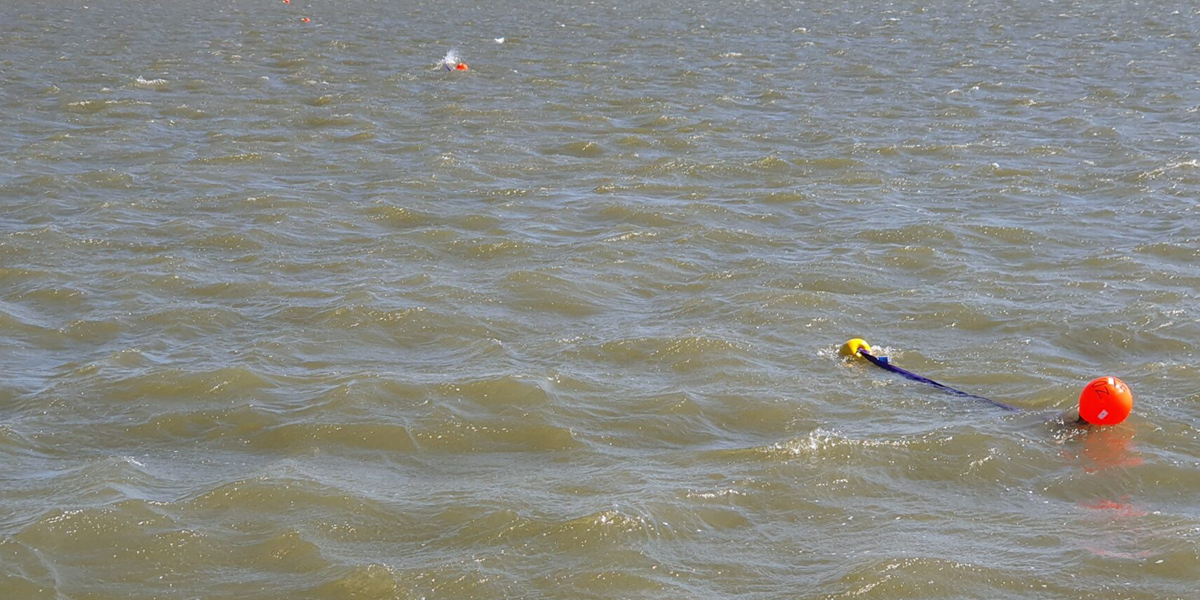Floats mark underwater experiment
At the end of April, the Wadden Mosaic scientists worked hard to get the first experiment for the hard substrate and shellfish recovery sub-projects into the sea, despite the circumstances.

Using different type of materials
Hard substrate such as boulders and driftwood used to be more common in the Wadden Sea, but has been removed by human hands over time or disappeared under the sand due to sedimentation. A hard surface provides a shelter, settlement location and nursery function for organisms in the Wadden Sea. The scientists at NIOZ and the University of Groningen are studying how bringing these substrates back can enrich the diversity of the Wadden Sea. That is why six different types of materials have been placed into the sea in 60 1m2 cages to monitor what happens with them over the next four years. The materials are: stones, pebbles, wood, shells, rock reefs and biodegradable plastic structures.
Marking the cages
The aim is to find the most suitable substrate for restoring the diversity of the Wadden Sea. On board the Harlingen 2, the ship of cockle fisherman Jouke Visser, a team of three worked with all their might to start the experiment. They sailed to the tidal basins Eijerlandse gat (Between Texel and Vlieland) and Schild (near the Rottums). Areas that looked promising on the map were first closely inspected to estimate whether the bottom was solid, and the water was deep enough. Subsequently, the 60 cages were placed in locations that are permanently submerged. When you pass it you will only see the buoys marked with 'NIOZ'. Over the next four years, the scientists will bring the cages on board to monitor how the materials behave in the Wadden Sea. In addition, they keep track of everything that grows and lives on the different substrates.
* Click the Wadden Mosaic logo in the side bar to read this story in Dutch.
* Find some general information on 'Mapping the underwater landscape' here.

